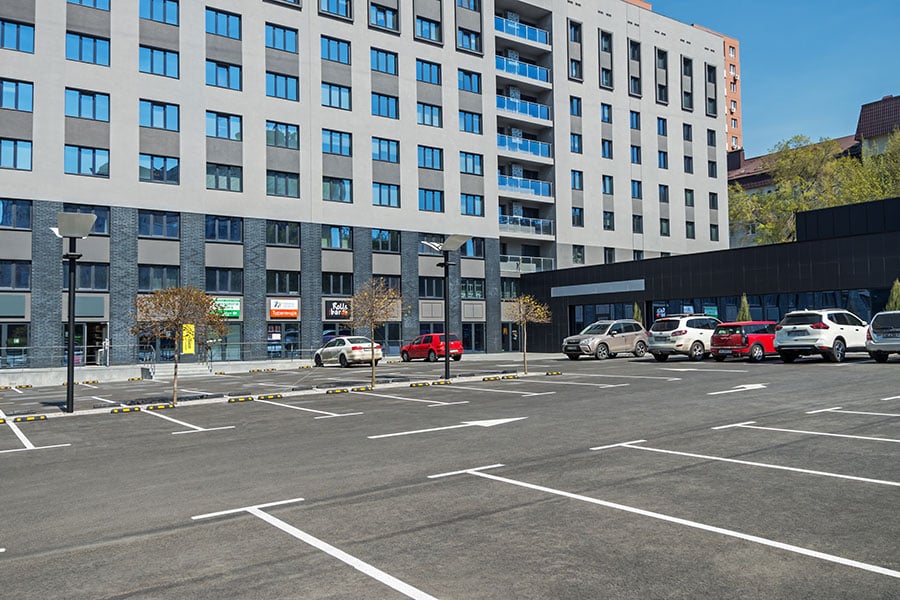Parking lots can make a big impression on the employees and customers of any business or establishment. Though they may seem simple to the end-user, as someone who designs and constructs commercial parking lots, you understand the complexity of commercial parking lot projects.
From the environmental impact to the project budget to traffic flow, many factors impact the final parking lot you plan and install. Below are some commercial parking lot design considerations that will dictate the end cost and quality.
Considerations for a Long-lasting Commercial Parking Lot
Parking Lot Purpose
The first decision that any developer needs to make is the purpose of their parking lot. All other significant decisions, such as the size, flow, and thickness, must be made with the intended end-users and purpose in mind.
For instance, let’s say that your company is developing a parking lot outside of a store or shopping center. To improve convenience for those specific users, one option is to have 45 or 60-degree angle parking for easier entry and exit.
Parking Lot Flow
Companies looking to cut costs may prioritize cramming the most parking spaces into their lot. Price must not be the most significant consideration, however. Ease of use and an efficient flow of traffic and pedestrians matter more than the number of spaces.
Regardless of the business type or the kinds of vehicles that the lot will hold, ease of use for the end-users must always be the top priority. Install adequate handicap spaces, create safe walkways, and allow for clean lines of sight. If necessary, even design spaces larger than the minimum 19’ by 9’.
Parking Lot Drainage
In parking lot construction, developers, engineers, and even the construction crews must always maintain drainage as a top priority. Designing for proper drainage prevents flooding and allows for longer lifespans.
Improper sloping above the surface often results in pooling water. If water does not flow well below the surface, the flow will saturate the subgrade, which can cause the parking lot to break.
Subgrade
Testing the subgrade on the parking lot land during the planning phase is a critical design step. Whether across the entire lot or just in a particular area, soft subgrade materials will cause significant problems and costs. Replacing any weak spots with crushed stone or asphalt will allow your lot to withstand the necessary weight loads and last longer.
A well-compacted subgrade will withstand the weight of both the parking lot surface and the vehicles that park on it. No matter the quality of the subgrade or parking lot materials chosen, PaveCore and BaseCore Geocell serve as a cost-effective and long-lasting foundation.
Parking Lot Materials
Of course, the selected surface material will impact your project’s upfront cost more than any other factor. But the initial cost isn’t the only factor to consider. The parking lots you develop can even impact the prevalence of heat islands.
The material you choose will impact future maintenance costs, the lot’s lifespan, environmental impacts, and the overall quality. Asphalt is less expensive upfront but requires maintenance, whereas cement requires a larger investment but is more durable. Vegetation and gravel are less expensive surface options for lots that won’t support large trucks or vehicles.
BaseCore Geocell for Parking Lots
Whether you are developing a parking lot for a store, an industry, or even a government agency, designing a reliable foundation is critical. BaseCore Geocell functions as a permeable base for commercial parking lots that is cost-effective, durable, and eco-friendly. BaseCore Geocell helps reduce your project’s costs with a foundation grid that is less expensive than concrete and far more durable than asphalt or gravel alone.
Reach out to our project engineers today to learn how PaveCore and BaseCore can help you develop long-lasting, environmentally friendly, and inexpensive commercial parking lots.
